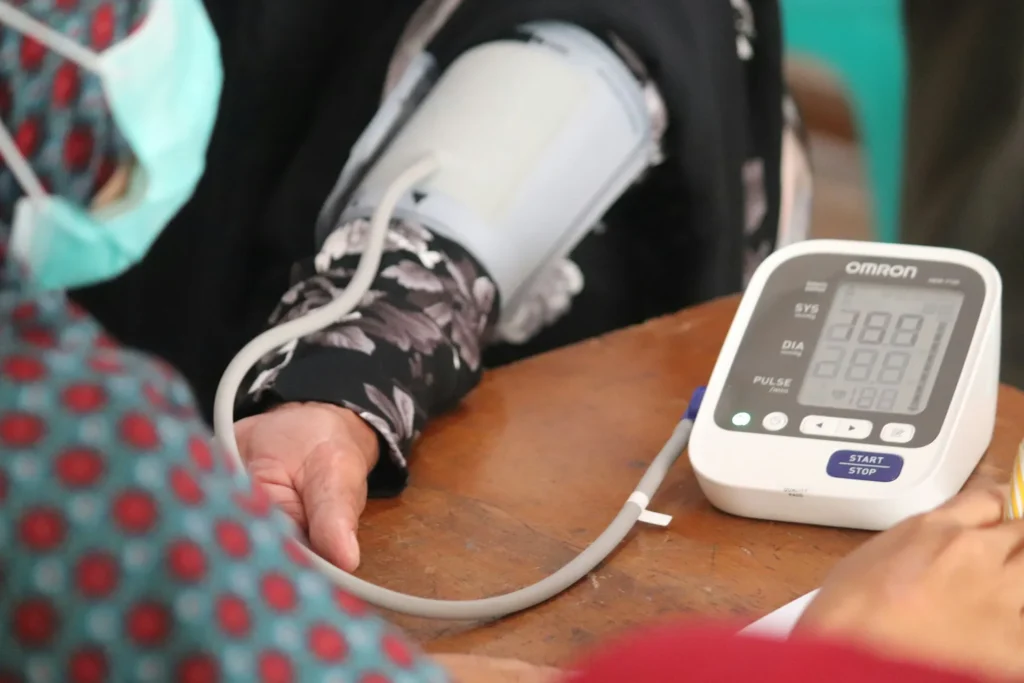Patients and hospital employees in Pensacola increasingly face questions about safety when a medical device fails during treatment or recovery. When an implant fractures, a pump malfunctions, or a monitor provides faulty data, the consequences can be life-changing, and the path to justice can feel confusing. This guide explains how liability works, what evidence you need, and how compensation is calculated so you can make informed decisions after a device-related injury. Whether you are a patient or a healthcare worker harmed by a malfunction, you’ll see how Florida and federal rules intersect and what to expect next. If you want local guidance or to review case results, resources like https://www.michlesbooth.com/ can help you evaluate your options in the region. If your situation involves a Pensacola Defective Medical Device incident, timing and documentation will matter from the first day.
Rising Concern Over Faulty Medical Devices in Florida Hospitals
Florida hospitals have reported a steady rise in device-related incidents, a trend driven by aging equipment, supply chain substitutions, and the rapid introduction of new technologies. In high-volume facilities as well as smaller centers serving the Panhandle, clinicians are managing more implanted devices, connected wearables, and disposable surgical tools than ever before. As utilization increases, so does exposure to failures—ranging from battery issues in infusion pumps to degraded materials in orthopedic components. These events can endanger both patients and staff, particularly when alarms misfire or components shed particles. While many facilities have robust safety protocols, device complexity and vendor variability can outpace the practical safeguards in place.
What drives the uptick in reports
Several forces are operating at once, and understanding them helps patients and workers recognize warning signs early:
- Accelerated product cycles that push updates before long-term durability data is available
- Staffing pressures that can lead to missed maintenance intervals or training gaps
- Supply constraints prompting substitutions of unfamiliar models or components
Pensacola facilities serve diverse populations with different device needs, which increases the range of products in circulation and complicates quality assurance. When a device fails, a thorough hospital incident review is only one piece of the liability puzzle; you also need to determine whether the root cause was a design flaw, a manufacturing error, or improper warnings. If you suspect a Pensacola Defective Medical Device issue, act quickly to document the device identifiers, preserve packaging, and capture the sequence of events. The sooner you align clinical evidence with product data, the stronger your claim can become.
Types of Defective Devices Linked to Patient Injuries in 2025
In 2025, injury reports most commonly center on implants and hospital equipment that either wear out prematurely or miscommunicate critical data. Orthopedic and spinal implants, particularly those using polyethylene liners or coatings with known wear patterns, are frequent sources of revision surgeries. Catheters, connectors, and surgical staplers continue to appear in adverse event databases due to leaks, misfires, or tissue damage. Pump-driven devices—such as insulin pumps and infusion systems—also present risks when sensors or software miscalculate dosing. Even diagnostic devices can cause harm when they produce false alarms or fail to alert teams to clinically significant changes.
Devices most often cited in 2025 injury reports
Although the list evolves, several device categories consistently surface in litigation and regulatory alerts:
- Joint replacements and modular hip systems subject to particle shedding or liner degradation
- Hernia mesh products associated with migration, adhesion, or infection
- CPAP and anesthesia-related devices affected by foam breakdown or air-path contamination
- IVC filters and vascular devices linked to fracture, tilt, or migration
- Robotic surgical instruments and staplers with calibration or firing issues
Not every device in these categories is dangerous, but trends show patterns worth discussing with your physician. If your doctor proposes revision surgery or advises discontinuing a device, ask about any open recalls or safety communications tied to your model and lot number. Thoroughly document symptoms, imaging, and operative findings—those records create a timeline that supports causation. For anyone exploring a Pensacola Defective Medical Device claim, aligning medical narratives with device serial data often reveals whether a broader defect pattern is at play.
How Product Liability Laws Protect Pensacola Residents
Florida law provides multiple legal pathways when a defective medical device causes harm, including claims for negligence, breach of warranty, and—crucially—strict liability for defective design, manufacturing, or inadequate warnings. Under strict liability, an injured person doesn’t have to prove the manufacturer intended harm; they must show the product was unreasonably dangerous when it left the manufacturer’s control and that defect caused the injury. Florida’s modified comparative negligence framework can reduce recovery if a plaintiff shares fault, though fault percentages are highly fact-specific in product cases. Additionally, different deadlines can apply depending on the legal theory, with a generally shorter window for personal injury claims after legislative changes in 2023. Because time limits and exceptions vary, prompt evaluation is essential to preserve your right to sue.
Who can be liable and why
Multiple entities can be responsible. Manufacturers, component suppliers, and distributors may share liability, particularly when a defective sub-part compromised performance. Hospitals and clinicians typically fall outside strict product liability but can face negligence claims if protocols or training fell short, though many cases focus squarely on the product’s defect. The “learned intermediary” doctrine also matters: if a manufacturer failed to adequately warn physicians of known risks, liability can attach even if the hospital followed standard procedures. A seasoned attorney can map the supply chain, evaluate instructions for use, and compare your medical records to known hazard profiles. If you need local insight or want to review similar outcomes, consult a resource like https://www.michlesbooth.com/ to understand strategic options aligned with Florida law.
Evidence Required to Prove Manufacturing or Design Negligence
The strongest device cases are built on meticulous evidence that ties a patient’s injury to a specific defect, not just a bad outcome. Start with the device itself: preserving the explanted component in a tamper-evident manner allows independent testing and failure analysis. Keep all packaging, inserts, and labels, because lot numbers, expiration dates, and unique device identifiers (UDIs) often connect your case to larger recall patterns. Medical records, operative notes, and imaging help establish the baseline health status, symptoms, and surgical findings, while electronic health record metadata can confirm timing and clinician alerts. Adverse event reports filed with the FDA, coupled with vendor service logs, round out a technical narrative that resonates with courts and juries.
Preserving the device and medical records
Your priority after a suspected device failure is to prevent spoliation—the loss or alteration of critical proof. Ask your surgeon and hospital in writing to preserve the device and related materials, and ensure a clear chain of custody for any future testing. Consider these steps:
- Request and secure your full medical file, including operative reports, device stickers, and UDI data
- Photograph the device, surgical site, or injuries when appropriate, noting dates and context
- Collect recall notices, field safety communications, and manufacturer correspondence tied to your model
Expert testimony is indispensable; biomedical engineers, materials scientists, and clinicians can explain how design choices or manufacturing deviations caused the malfunction. If a hospital device was involved—such as a monitor or pump—seek maintenance logs, calibration records, and user training certificates to distinguish operator error from a defect. Each piece supports the central question: was the product unreasonably dangerous, and did that hazard directly cause the harm?
Compensation Categories Available for Medical Device Victims
Compensation in device cases reflects both immediate and long-term impacts, capturing medical costs, lost earnings, and the profound human toll of pain and disability. Economic damages typically include emergency care, hospitalization, revision surgeries, medications, therapy, and the cost of assistive devices or home modifications. If injuries prevent a return to prior work or reduce capacity, claims may include lost wages and diminished future earning power. Non-economic damages address pain and suffering, mental anguish, and loss of enjoyment of life—harms that are real but require careful documentation from treating providers and, sometimes, mental health professionals. In rare situations involving egregious corporate conduct, punitive damages may be available to punish and deter, subject to Florida’s statutory limits and case law.
Modeling lifetime costs
Comprehensive damages require a forward-looking analysis that accounts for the natural course of your injury and the device’s failure mode. Life care planners and vocational experts can model decades of anticipated care, including revision surgeries, prosthetic replacements, recurring therapies, and caregiver support. Economists translate those needs into present-day values while considering inflation and wage growth. Insurers often contest these projections, so consistent treatment records and clear physician opinions strengthen the case for future costs. Remember that damage strategies differ for individual injury claims versus wrongful death claims, where funeral expenses and survivors’ losses also come into play.
Federal Oversight by the FDA and Post-Recall Legal Actions
The FDA regulates medical devices through pathways such as 510(k) clearance, De Novo classification, and premarket approval (PMA), each with distinct evidentiary requirements and legal implications. PMA devices undergo rigorous review, and federal preemption may limit certain state-law claims, though parallel claims that mirror federal duties can proceed in specific contexts. Devices cleared through 510(k), by contrast, are evaluated for substantial equivalence rather than full safety and efficacy, which often leaves room for traditional product liability claims. Regardless of the pathway, manufacturers must report adverse events, track unique device identifiers, and correct safety issues through recalls and field actions. Understanding these regulatory frameworks helps litigants target viable claims and avoid preempted theories.
What a recall means for your lawsuit
A recall—Class I, II, or III—signals recognized risk, but it is not a silver bullet that automatically proves liability. Courts often treat recall evidence as relevant but still require plaintiffs to prove defect, causation, and damages to the civil standard. After a recall, manufacturers issue instructions for monitoring, repair, or removal; compliance can affect medical outcomes and legal strategies. Patients dealing with a Pensacola Defective Medical Device should gather the recall notifications, note dates of communication, and coordinate with treating clinicians about next steps. The FDA’s MAUDE database and company Corrective and Preventive Action (CAPA) records can bolster claims by showing patterns of adverse events and the timeliness of the manufacturer’s response.
Recent Lawsuits Highlighting Accountability in Device Failures
Recent litigation underscores how courts evaluate corporate knowledge, warnings, and design decisions in the medical device arena. National cases involving hernia mesh have examined whether material choices and pore structures led to adhesion and chronic pain. Hip and knee implant suits have focused on liner oxidation, taper corrosion, and premature wear that forced early revision surgeries. CPAP and ventilator-related cases have scrutinized foam degradation, particulates, and chemical off-gassing, with allegations that some risks were known but not adequately communicated. IVC filter litigation has addressed fracture and migration, particularly when retrieval proved difficult or dangerous.
Lessons for Pensacola patients
What do these lawsuits teach? First, documentation wins cases: device identifiers, imaging, and pathology reports turn anecdote into proof. Second, internal company records—unearthed during discovery—often clarify what risks were known and when, which can shift settlement dynamics. Third, juries respond to clear engineering narratives, especially when safer alternative designs were feasible at the time of manufacture. If your experience mirrors a pattern seen in broader litigation, coordinating your claim with counsel who tracks national developments can enhance leverage. For anyone pursuing a Pensacola Defective Medical Device case, staying current with filings and recall updates is vital; regional resources like https://www.michlesbooth.com/ can help you compare your facts to active litigation trends and make timely strategic choices.

